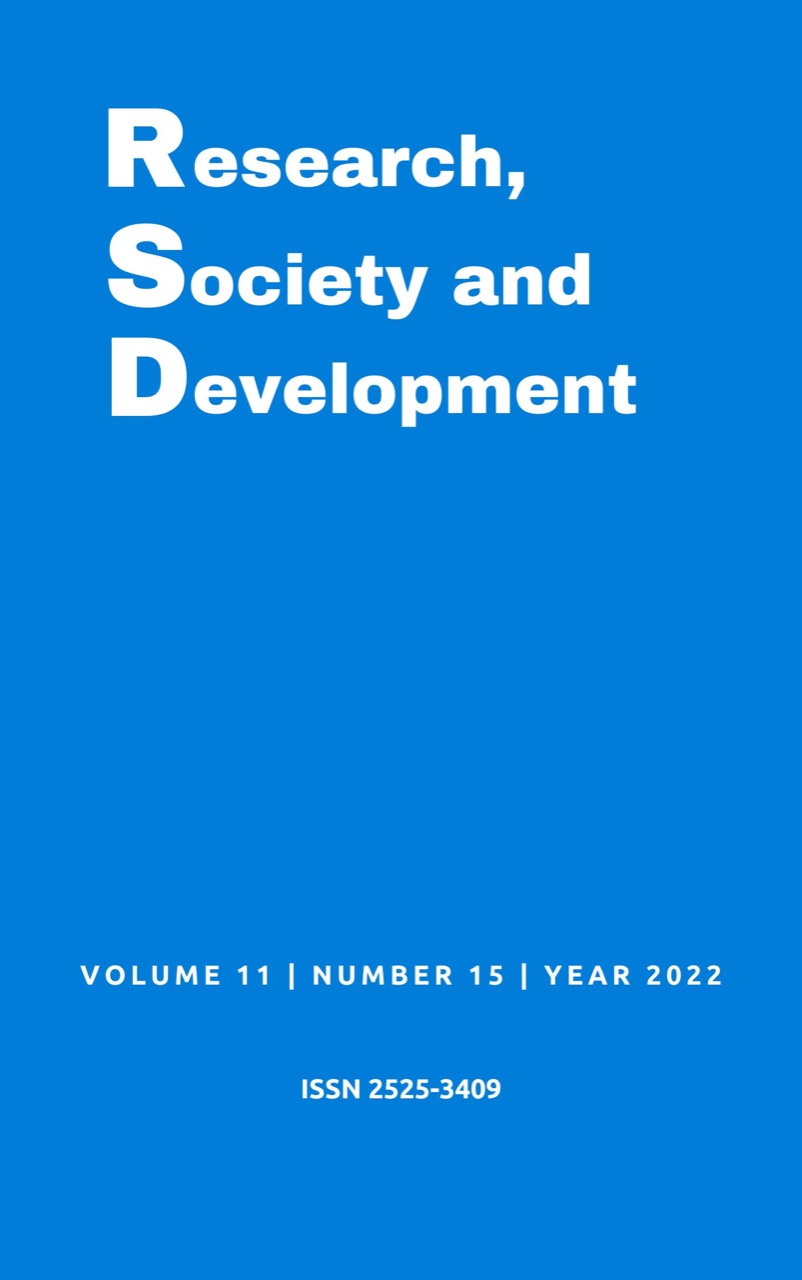Psychiatric disorders causing trichotylomania
DOI:
https://doi.org/10.33448/rsd-v11i15.37220Keywords:
Bezoars, Mental Disorders, Trichotillomania.Abstract
Trichotillomania is a disorder marked by the compulsive act of removing hair from one's own body. Although little studied over the last decades, studies demonstrate an association of this condition with other psychiatric disorders. With this in mind, the present study seeks to elucidate the main psychiatric disorders that cause trichotillomania. This is a systematic literature review, in which articles were searched in the Google Escolar, Scientific Electronic Library Online and Pubmed databases using the following terms and descriptors: “trichotillomania”, “Rapunzel syndrome” or “trichobezoar” and the Boolean operator AND. PRISMA guidelines were also followed throughout the selection process. The prevalence of psychiatric disorders associated with trichotillomania ranged from 78.8% to 79% among the selected studies. The most cited disorders by the authors were: obsessive compulsive disorder, major depressive disorder, generalized anxiety disorder, social phobia, specific phobia, excoriation disorder, pathological nail biting, TICS disorder, alcohol dependence and dysthymic disorder. All authors demonstrated a high prevalence of psychiatric disorders associated with the occurrence of trichotillomania.
References
American Psychiatric Association (2002). DSM-IV. Manual de diagnóstico e estatístico de transtornos mentais – (4ª edição): Artmed.
American Psychiatric Association (2013). DSM-V. Manual de diagnóstico e estatístico de transtornos mentais – (5ª edição): Artmed.
Brizola, J., & Fantin, N. (2016). Revisão de literatura e revisão sistemática de literatura. Revista de Educação do Vale do Arinos, 3(2):23-39.
Bueno, G. N., & Águes, K. C. (2017). Terapia analítico-comportamental na modificação do comportamento de tricotilomania. Fragmentos de cultura, 27(4):570-582.
Eskeland, S. O., Moen, E., & Hummelen, B. (2018). Trichotillomania. Tidsskr for Den Norske laegeforening: tidsskriftfor praktisk medicin, ny raekke, 138(10).
Fischer, A. R., Regino, C. M., Grzybowski, L. M. C., Roste, R. R. L., & Carvalho, M. F. C. M. (2022) Tricotilomania: uma visão geral de aspectos neurobiológicos e comportamentais. Ensaios e Ciência, 26(2):27-32.
Galvão, G. M. B., & Ricarte, I. L. M. (2020). Revisão sistemática de literatura: conceituação, produção e publicação. LOGEION Filosofia da Informação, 6(1):57-73.
Gerstenblith, T. A., Jaramillo-Huff; A., Ruutiainen, T., Nestadt, P. S., Samuels, J. F., Grados, M. A., Cullen, B. A., Riddle, M. A., Liang, K. Y., Greenberg, B. D., Rasmussen, S. A., Rauch, S. L., McCracken, J. T., Piacentini, J., Knowles, J. A., Nestadt, G., & Bienvenu, O. J. (2019). Trichotillomania comorbidity in a sample enriched for familial obsessive-compulsive disorder. Comprehensive Psychiatry, 94(152123).
Grant, J. E., & Chamberlain, S. R. (2016). Trichotillomania. American Journal of Psychiatry, 173(9):868-874.
Grant, J. E., Dougherty, D. D., & Chamberlain, S.R (2020). Prevalence, gender correlates, and co-morbidity of trichotillomania. Psychiatry Research, 288(1-14).
Houghton, D. C., Maas, J., Twohig, M. P., Saunders, S.,M., Compton, S. N., Neal-Barnett, A. M., Frankiln, M. E., & Woods,, D. W. (2016). Comorbidity and quality of life in adults with hair pulling disorder. Psychiatry Research, 239:12-19.
Lamothe, H., Baleyte, J. M., Mallet, L., & Pelissolo, A. (2020). Trichotillomania is more related to Tourette disorder than to obsessive-compulsive disorder. Brazilian Journal of Psychiatry, 42(1): 87-104.
Lima, L. H. A., Nascimento, W. C., Barros, L. N., Rocha, S. L., & Domingues, R. J. S. (2021). Estratégias de estudo utilizadas por alunos do curso de medicina no eixo morfofuncional: Uma revisão de literatura. Research, Society and Development, 10(7):1-10.
Lima, M. C. P., Trench, E. V., Rodrigues, L. L., Dantas, L. A. S., Lovadinni, G. B., & Torres, A. R. (2010). Tricotilomania: dificuldades diagnósticas e relato de dois casos. Revista Paulista de pediatria, 18(1):104-108.
Manderico Junior, G. M., Malozze, P. C., & Menezes, V. O. (2019). Tricobezoar em íleo terminal. Relatos de casos cirúrgicos, 5(2):e730.
Melo, D. F., Lima, C. S., Piraccini, B. M., & Tosti, A. (2021). Trichotillomania: What Do We Know So Far? Skin Appendage Disorders, 8(1):1-7.
Menezes, R. S. (2016). Transtorno obsessivo compulsivo (TOC): tricotilomania, tricofagia e a síndrome de Tourette. 20f. 2016. Trabalho de conclusão de curso (Graduação em Saúde Coletiva) – Universidade de Brasília.
Prisma (2021). Preferred Reporting Items for Systematic Reviews. The PRISMA 2020 statement: an updated guideline for reporting systematic reviews. BMJ, 372(71).
Richartz, M., Gon, M. C. C., & Zazula, R. (2018). Avaliação comportamental de um caso de tricotilomania em uma adolescente. Revista brasileira de terapia comportamental e cognitiva, 2:105-119.
Souza, M. P., Gontijo, L. M., Ferandes, S. S., & Abud Neto, C. S. A. (2020). Síndrome de Rapunzel: um relato de caso. Brazilian Journal of Surgery and Clinical Research, 30(3):57-59.
Downloads
Published
Issue
Section
License
Copyright (c) 2022 Aluísio Ferreira de Aguiar; Arthur Wada; Fabrício Silva Pimenta; Henrique Martins Oliveira; Hugo Abreu de Souza Freitas

This work is licensed under a Creative Commons Attribution 4.0 International License.
Authors who publish with this journal agree to the following terms:
1) Authors retain copyright and grant the journal right of first publication with the work simultaneously licensed under a Creative Commons Attribution License that allows others to share the work with an acknowledgement of the work's authorship and initial publication in this journal.
2) Authors are able to enter into separate, additional contractual arrangements for the non-exclusive distribution of the journal's published version of the work (e.g., post it to an institutional repository or publish it in a book), with an acknowledgement of its initial publication in this journal.
3) Authors are permitted and encouraged to post their work online (e.g., in institutional repositories or on their website) prior to and during the submission process, as it can lead to productive exchanges, as well as earlier and greater citation of published work.


